Echinodorus subalatus
Scientific name: Echinodorus subalatus
Family: Alismataceae
Maximum size reached under cultivation: 25 - 40 cm (9.84 - 15.75 inch)
014
Recommended pH range: 6.5 - 7.8
Recommended water hardness: 4 - 12°dGH (71.43 - 214.29ppm)
0°C 32°F30°C 86°F
Recommended temperature range: 20 - 26 °C (68 - 78.8°F)
Preferred propagation method: Runners
Native to: South America
Growth rate: Normal
Recommended substrate: Sand
Lighting requirements: Bright
Ideal placement in tank: Background
Family
Alismataceae
Common Name
Subalatus Sword Plant
Origin
Echinodorus subalatus is native to Central and South America, primarily thriving in the wetlands, rivers, and marshy regions of Brazil, Argentina, and Uruguay. In its natural habitat, this plant experiences fluctuating water levels, growing both fully submerged and emersed. This adaptability makes it a hardy and versatile choice for aquariums.
Propagation
Echinodorus subalatus reproduces primarily through runners that spread under the substrate, producing daughter plants at each node. Once these daughter plants develop their own root systems, they can be gently separated and replanted in different areas of the aquarium. Rhizome division can also occur in emersed settings, but this is rare in fully submerged environments. To ensure successful propagation, use nutrient-rich root tabs in the substrate to support the young plants as they settle in. This makes Echinodorus subalatus an excellent choice for aquarists looking to easily expand their plant collection.
Difficulty
Easy. Echinodorus subalatus is a hardy and undemanding plant that is suitable for both beginner and experienced aquarists. Its ability to tolerate a range of water conditions makes it an excellent choice for most tropical aquariums.
Short Description
Echinodorus subalatus, commonly known as the Subalatus Sword Plant, is a popular aquatic plant known for its bright green, lance-shaped leaves that provide depth and texture to any aquarium. It typically grows to a height of 25 to 40 cm (9.84 - 15.75 inches), making it perfect for background planting in medium to large tanks. The plant not only enhances the aesthetic appeal of aquariums but also aids in oxygenating the water, creating a healthy environment for fish and other tank inhabitants.
This plant grows at a normal rate under bright lighting conditions, though it can tolerate medium lighting as well. For optimal growth, Echinodorus subalatus thrives in sandy substrates with regular nutrient supplementation, such as root tabs. Be mindful of yellowing leaves, which can indicate a lack of iron or other nutrients. Regular pruning of dead or decaying leaves will help maintain the plant’s health, prevent nutrient loss, and keep the aquarium looking tidy.
Maintenance and Care
Echinodorus subalatus grows best in a pH range of 6.5 to 7.8 and tolerates water hardness between 4 and 12°N (71.43 - 214.29 ppm). The recommended temperature range is 20 - 26°C (68 - 78.8°F), making it ideal for tropical freshwater aquariums. This plant performs best when planted in a sandy substrate, which allows its rhizomes to spread and establish stable roots.
For best results, provide bright lighting, as it enhances the plant’s growth and vibrancy. While the plant can tolerate medium lighting, growth may slow, and the leaves may lose some of their brightness in lower light conditions. Fertilization is highly recommended during the acclimation period, as it supports strong root development and prevents nutrient deficiencies. Regular pruning of old or damaged leaves will promote new growth and prevent the plant from overwhelming the aquarium space.
Compatibility
Echinodorus subalatus is compatible with a variety of peaceful fish species and works well in community tanks. Its tall, dense leaves provide excellent cover for smaller fish, fry, and shrimp, offering them shelter and protection. Fish such as tetras, rasboras, and dwarf cichlids thrive in tanks with plants like Echinodorus subalatus, as it mimics their natural environment. However, caution should be taken if kept with herbivorous fish, such as plecos, or omnivorous fish, like goldfish, which may nibble on its delicate leaves.
Submersion and Aquascaping
Fully submersible, Echinodorus subalatus is prized for its use in aquascaping. Its tall, lance-shaped leaves create a dynamic, vertical structure, making it an excellent background plant for larger aquariums. The plant's vibrant green leaves add a lush, natural feel to aquascapes and work well in South American biotope setups, where it complements driftwood, rockwork, and other aquatic plants.
With its normal growth rate and minimal maintenance requirements, Echinodorus subalatus is a great choice for aquarists seeking to create a visually stunning, yet easy-to-maintain, aquascape. Its adaptability and resilience make it perfect for both beginners and experienced aquarists who want to add a natural, flowing element to their aquarium design.

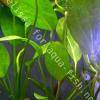 Echinodorus “Ozelot”
Echinodorus “Ozelot” Echinodorus “Red Flame”
Echinodorus “Red Flame”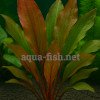 Echinodorus “Red Special”
Echinodorus “Red Special”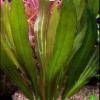 Echinodorus “Rubin”
Echinodorus “Rubin” Echinodorus “Tricolour”
Echinodorus “Tricolour” Echinodorus amazonicus
Echinodorus amazonicus Echinodorus angustifolius
Echinodorus angustifolius Echinodorus bleheri
Echinodorus bleheri Echinodorus cordifolius
Echinodorus cordifolius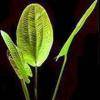 Echinodorus grandiflorus
Echinodorus grandiflorus Echinodorus horemanii
Echinodorus horemanii Echinodorus latifolius
Echinodorus latifolius Echinodorus macrophyllus
Echinodorus macrophyllus Echinodorus major
Echinodorus major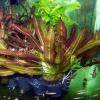 Echinodorus osiris
Echinodorus osiris Echinodorus parviflorus
Echinodorus parviflorus Echinodorus quadricostatus
Echinodorus quadricostatus Echinodorus schlueteri
Echinodorus schlueteri Echinodorus tenellus
Echinodorus tenellus Echinodorus uruguayensis
Echinodorus uruguayensis Sagittaria graminea
Sagittaria graminea Sagittaria platyphylla
Sagittaria platyphylla Sagittaria subulata
Sagittaria subulata